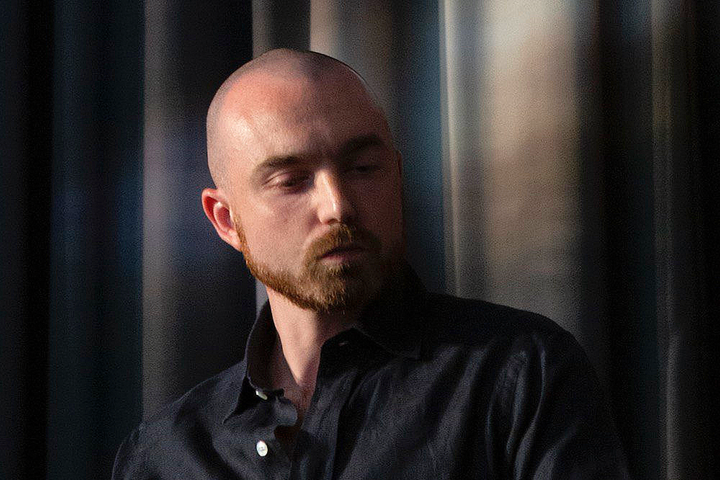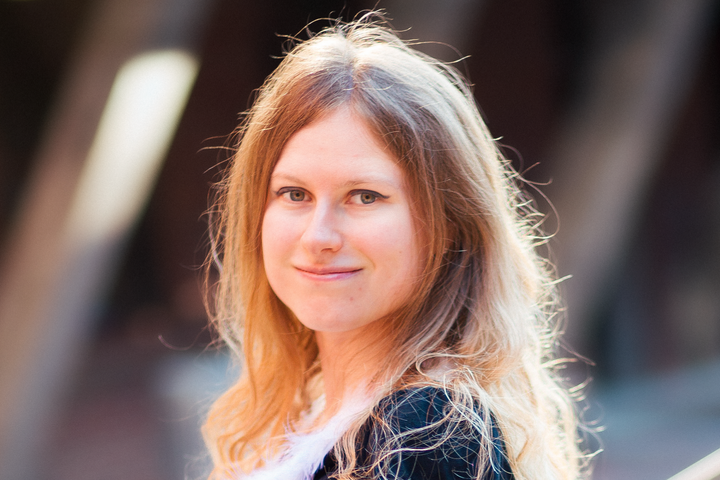Nadia Taiga on Curation, Dynamic NFTs, and Web3 Art

Nadia Taiga is an art consultant, curator, and producer with thirteen years of experience in the arts sector. She organized multiple Collateral Events at the Venice Biennale of Art and museum exhibitions around the world. She worked as the Project Management Director of Glasstress and Berengo Studio (2010-17), a leading institutional voice in glass that showcases works by acclaimed and emerging artists. Her career path has seen her collaborate with institutions such as The State Hermitage Museum, as well as organize large-scale public art projects and collaborations with over 200 artists from distinct countries.
She joined Snark.art in 2019 by expanding her expertise into NFT and blockchain technology as a new medium for art and involving many curators, artists, and art professionals to explore blockchain and contribute art projects to the history of art. Nadia is a renowned speaker and educator in Web3 space. With Snark.art team Nadia produced various NFT art projects, working with established artists from both the traditional and crypto art worlds: Random International, Mat Collishaw, Eve Sussman, Michael Joo, Danil Krivoruchko, Ilya and Emilia Kabakov, Nancy Baker Cahill, Kendell Geers, Tommy Hartung, Duke Riley, Volkmar Klien, Cassils, and many others.
What is the role of the curator in the digital art space?
As curators in the digital art space, our main role is to champion new tech art and overcome skepticism from the traditional art sector. We push boundaries and innovate by selecting, organizing, and presenting artists and their artworks in online platforms or virtual and physical exhibitions. Our goal is to shape the narrative and context around digital artworks, ensuring their relevance within the digital art ecosystem and traditional art scene. We work closely with artists and collectors to create engaging experiences for audiences and promote the understanding and appreciation of digital art. At Snark.art, a production studio that has experimented with blockchain technology as a new medium since 2018 and on its OG.art platform for dynamic NFTs it also involves a deep understanding of the artists’ practice and how it can be translated into interactive storytelling in a form of the dynamic NFT collection.
How would you describe the differences between the roles of curators in traditional and digital art?
Whether in traditional or digital art, a good curator creates an experience for the audience, taking them on a journey through artworks that can evoke unexpected emotions, raise questions, or provide surprising answers. In the Web3 art space, curators face the challenge of not only navigating the established systems of museums, galleries, and art fairs that blockchain art has already entered but also developing new digital blockchain art aesthetics. We aim to embrace the legacy of digital and computer art while incorporating the best practices of conceptual art. It's important to reflect on the advanced status of new technologies like AI, blockchain, and VR, which are changing how we create, collaborate, and engage with art.
Why is curation essential for Web3 art?
Curation is essential for Web3 art because this field is still young and rebellious, and it requires careful guidance to support its best qualities and eliminate bad practices. Through curation, we create a long-term vision and validate Web3 art. At Snark.art and OG.art, our aim is to create projects that will be remembered in art history. This approach means we carefully select artists, understand their artwork's concept and aesthetics, and execute projects in innovative ways. We articulate these projects to the audience and present them to the world. I think we all at Web3 are contributing to the history of digital art.
For the newbies, could you explain the concept of dynamic NFTs?
Dynamic NFTs are artworks that constantly transform based on various factors. Imagine an artwork that changes according to your crypto wallet data, the moon phase, weather conditions, or cryptocurrency rates. It's a unique and personalized experience that responds to your actions. You can even enhance the rarity of the artwork by participating in interactive games. Dynamic NFTs are living and breathing generative art pieces that use algorithms and external or internal data to create new variations of the artwork with each viewing. They embed interactive games or virtual experiences within an NFT, making every collector a co-creator and enhancing the overall user experience within the NFT ecosystem.
What are examples of dynamic NFTs?
Certainly! Let me share a few examples. For instance, in the OG:Crystals collection by Michael Joo and Danil Krivoruchko, produced by Snark.art in 2021, the crystal grows when the collector sells it to another crypto wallet. In "Life in Our Minds" by Random International and Danil Krivoruchko, longer collectors hold the mandala boids rare and more interesting it became. Another example is "Heterosis" by Mat Collishaw and Danil Krivoruchko, where collectors breed their flowers by borrowing DNA from other flowers in the collection. Additionally, in all projects rare traits can appear based on other artworks in the owner's collection, creating an interconnected system of projects.
What elements does Web3 art space currently lack?
One important element that the Web3 art space needs is mass adoption. While getting involved in Web3, collecting, and creating on the blockchain is not difficult for those familiar with the technology, it can be daunting for the average person. We need to find ways to make the Web3 art ecosystem more accessible, scalable, and interoperable. At Snark.art, we are actively working on developing tools on the OG.art platform that will allow creators and brands to create their own dynamic NFT collections without requiring coding or extensive knowledge of generative art. It helps to make Web3 space more accessible for artists and brands.
What is your take on the future of NFTs? What place will they hold in the art market in the future?
In my recent talk titled "Dynamic NFTs: the Road to the Nobel Prize?" at the Non-Fungible Conference in Lisbon, I aimed to highlight the transformative potential of dynamic interactive NFTs. These NFTs have the power to revolutionize not only art but also entertainment, marketing, and gaming. According to Dutch historian and cultural theorist Johan Huizinga and his book "Homo Ludens" published in 1936, play is a primary and necessary condition for the generation of culture and society. Dynamic interactive NFTs have unleashed the synergy between art, technology, and gaming, giving rise to new aesthetics and culture and shaping the future of art. It brings us back to the beginning of our conversation - this is why curation is important.



